Even if you’ve whipped your skincare regimen into serious shape and have your dermatologist on speed dial, certain daily habits can make or break your skin goals. Whether your concerns are fine lines, wrinkles, hyperpigmentation, or just laxity that comes from living life, there are a few super-common habits that Jen Copfer, RN, aesthetic registered nurse and founder of The Anti-Aging Pro, says could be making aging skin much worse.
“Rather than listing the typical bad skincare habits that are already widely known and talked about, such as unprotected sun exposure, smoking, poor diet, and inadequate sleep, I want to draw attention to some less talked-about, but very common bad habits that can make aging skin look exponentially worse,” Copfer shares. “These are based on my own professional experience with my patients over the age of 40, and I believe they are important to be aware of.”
There are Copfer’s top three worst habits for women over 40 (in no particular order).

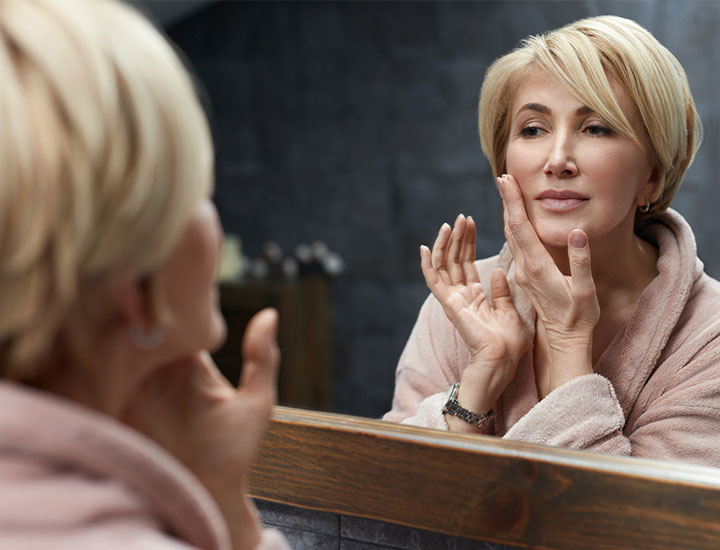
Bad Habit: Sleeping on your face
It’s so hard to control turning off when you’re in dreamland, but waking up with your head smushed against your pillow can have long-term skin consequences. “Consistently sleeping on your face can result in permanent wrinkles, lines, and creases, as well as a loss of elasticity and firmness over time,” Copfer says. “When you sleep on your face, you put pressure and friction on your delicate skin. This pressure causes the skin to fold, stretch, and crease in ways it wouldn't normally during the day. Over time, this forced repeated pressure and distortion can lead to the formation of wrinkles, lines, creases, and saggy skin.”
Avoiding this bad habit becomes even more important as we age, Copfer notes, because as we get older, our skin becomes thinner and more delicate, making it even more susceptible to damage from the pressure and friction of sleeping on the face.
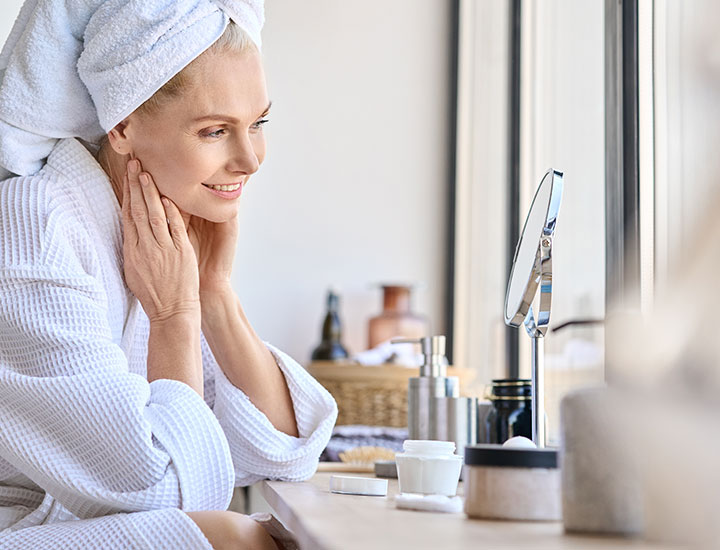
“As an aesthetic registered nurse specializing in anti-aging and advanced aesthetic treatments, I have personally observed the negative effects of sleeping on one's face in many of my patients, especially those who consistently sleep on the same side every night,” she says. “In these patients, I frequently see more prominent wrinkles, newly developed creases in uncommon areas, and a loss of elasticity and firmness on the side they sleep on compared to the other side.”
Best habit:
This one’s simple, though it may take some getting used to: train yourself to sleep on your back and not on your face. “It will take a lot of practice if you’re not used to doing so, but your skin will thank you later,” Copfer says. “You can also use a silk or satin pillowcase, which can help reduce friction to help to prevent sleep lines and wrinkles.”
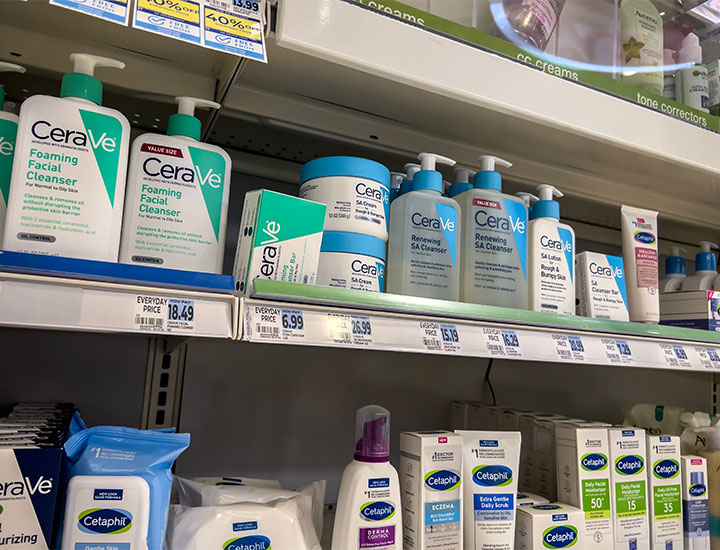
Bad Habit: Not exfoliating regularly
“As we age, our skin undergoes many physiological changes, and it's important to address these changes in order to maintain healthy and radiant skin,” Copfer says. “One of these changes is the slowing down of our cell turnover time. Cell turnover is a natural process, or cycle, where our skin continually creates new skin cells and sheds the dead ones from the top layer of our skin.”
When this process slows down, dead skin cells begin to accumulate and stay on the skin's surface longer than they would in younger skin, Copfer says. “This essentially leads to a buildup of dead skin cells on the skin’s surface. As you can imagine, this excess buildup of dead skin cells has several visible, unwanted effects on the skin, such as dull skin, uneven or rough skin texture, and causes fine lines and wrinkles to be more noticeable.”
The key to dealing with a slower cell turnover is exfoliating regularly, which can help counteract this effect and keep your skin looking healthy and vibrant. “Not only does exfoliating remove the accumulation of dead skin cells, it also helps to speed up the slowing cell turnover time,” Copfer says. “When the top dead cells are removed from exfoliating, your skin sends a signal to the bottom layer of the skin to produce new cells to replace the ones that were exfoliated off, speeding up the cell turnover time. As an aesthetic registered nurse specializing in advanced aesthetic treatments, many of my patients, especially those over the age of 40, express concerns about dry, flaky, dull, and rough skin, and most aren’t exfoliating regularly.”
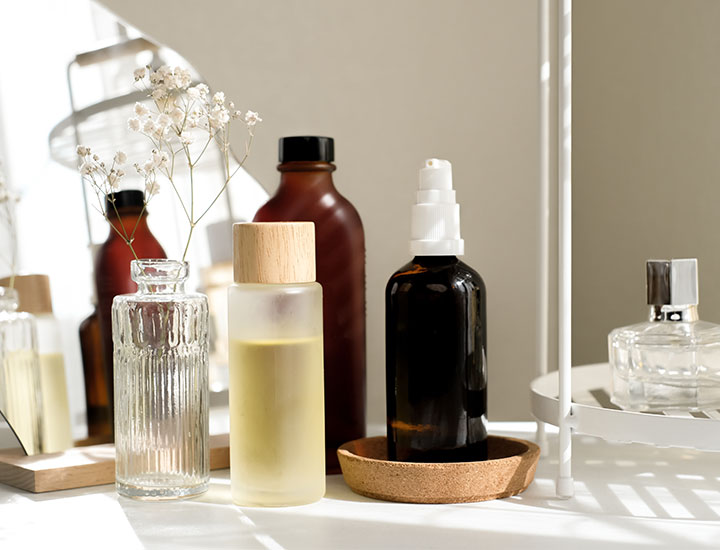
Best habit:
You can exfoliate at home AND make regular appointments with your dermatologist to have a pro get the job done with in-office lasers, peels, and other treatments.
At-home: Copfer recommends incorporating gentle exfoliation into your skincare routine 1-2 times a week. “The method of exfoliating you use will depend on your skin type and sensitivity,” she says. “There are several options for exfoliation that can be done at home, including the use of chemical exfoliants like alpha-hydroxy acids (AHAs) such as glycolic, lactic, or the gentler mandelic acid, beta-hydroxy acids (BHAs) like salicylic acid, exfoliating enzyme products, or a gentle physical exfoliant like a soft washcloth. However, it's important not to overdo exfoliating, as over exfoliating can lead to additional new skin issues.”
Professional treatments: If you are a candidate, Copfer reminds us that there are numerous professional treatments that help to exfoliate the skin and can be done every 6-8 weeks. “These include treatments like chemical peels, dermaplaning, exfoliating facials, microneedling, and laser resurfacing,” she says.
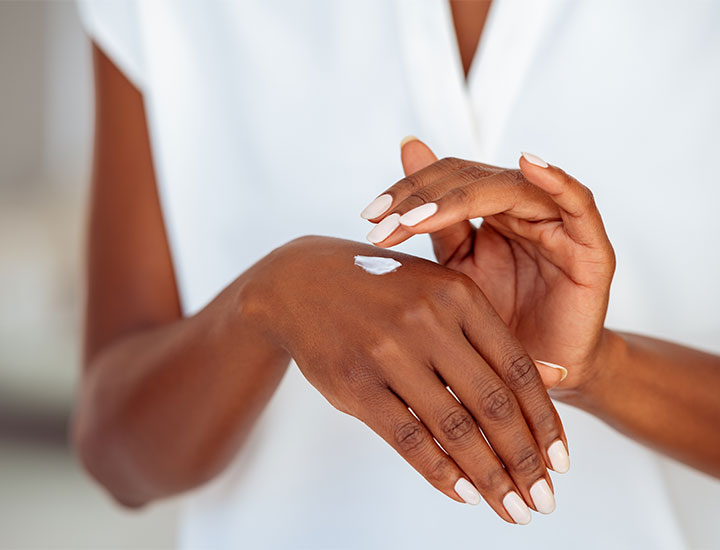
Bad Habit: Not moisturizing enough and not using the proper moisturizer for mature skin
Another physiological change that takes place in the skin as we age is a decrease in the natural lipids that are present in our skin, Copfer stresses. “These lipids form a coating on the outer layer of our skin, which serves as our skin’s protective mechanism, also known as our skin barrier. This coating helps to keep bad things out, such as irritants, allergens, and pathogens, while also keeping good things in, such as hydration and moisture. These natural lipids are made up of ceramides, fatty acids, and cholesterol. A decrease in any of these lipids can cause skin to be dry, irritated, sensitive, rough.”
As we age, the amount of these natural lipids decreases, especially ceramides, she continues — and this leads to drier skin and a weaker skin barrier, making the skin more sensitive and fragile.
“To tackle this issue, it is crucial to moisturize aging skin more frequently,” Copfer says. “However, not just any moisturizer will do; it should contain all three natural lipids. Most importantly, choose a moisturizer with a high concentration of ceramides to compensate for the decreased levels in aging skin.”
Best habit:
Two words: hydrate and moisturize!
“Prioritize moisturizing your skin at least two times a day,” Copfer says. “Listen to your skin, if it start to feel or looks dry, moisturize even more often. Look for moisturizers that are made for ‘mature skin,’ promote barrier repair, and have a high content of ceramides.”
Ready to break out of your bad skincare habits and experience even fresher, dewier skin? Break these three poor habits and adopt better ones — it’s never too late!


























